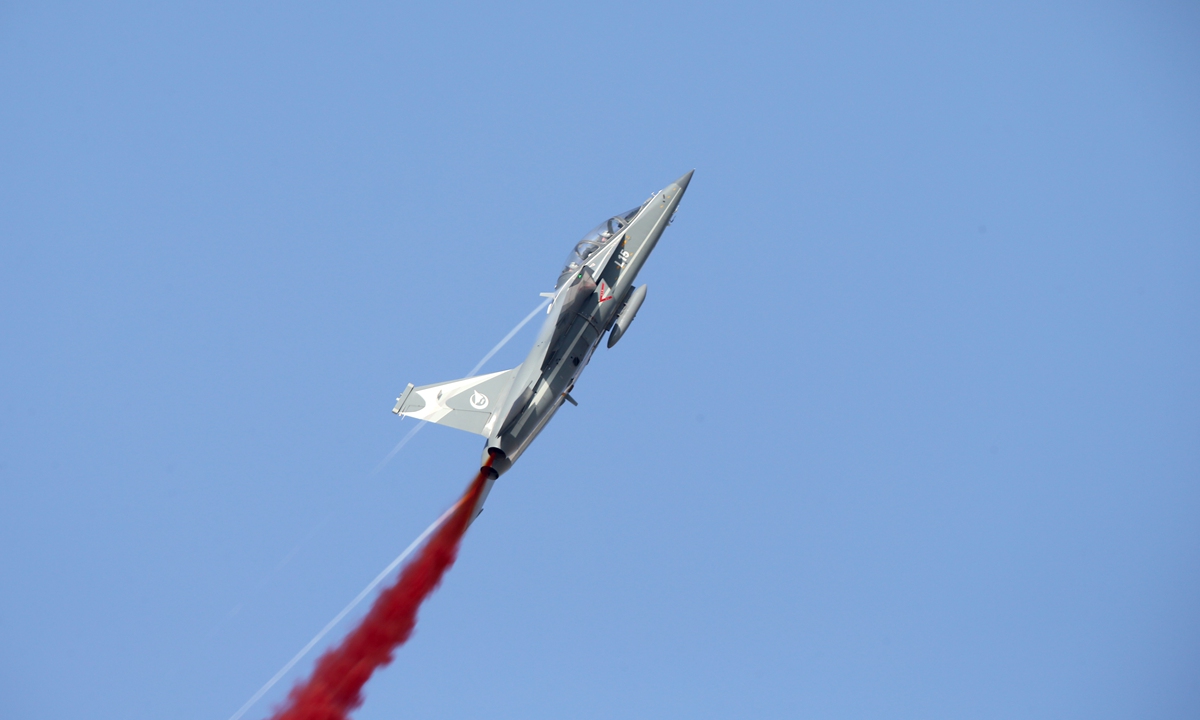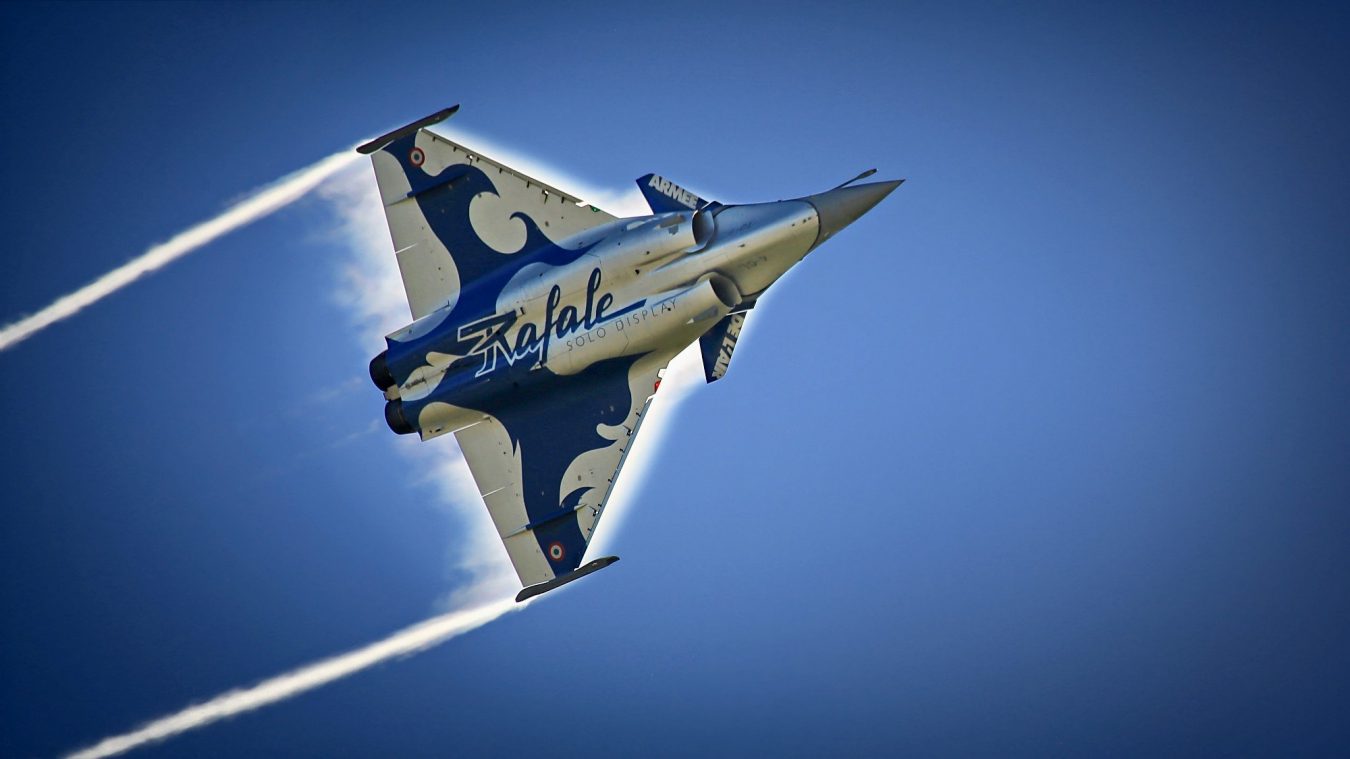China’s aviation industry announced on February 21 that the UAE had signed an agreement to export domestically developed L-15 advanced trainer jets.
The announcement comes a year after the UAE Defense Ministry first stated that it wanted to sign a contract with China National Aero-Technology Import & Export Corporation (CATIC) to procure the L-15 training and light combat aircraft, with the possibility of purchasing another 36 planes later.
The latest pact comes even as a model of the L-15 aircraft with aerial refueling capabilities is currently on display at the IDEX 2023 defense expo in Abu Dhabi, Chinese state-owned media Global Times reported.
The purchase of the L-15 is significant because this is the first time the United Arab Emirates, a traditional US ally, has purchased a Chinese fixed-wing military aircraft.
Previously, China debuted its L-15 advanced jet trainer at the Dubai Airshow 2021, reportedly to market its trainer jet to countries in the Middle East. A few months later, the UAE announced, at the end of the UMEX and SIMTEX shows, that it would eventually buy the aircraft.
“The L-15 is an advanced trainer and a light combat aircraft and is considered one of the latest technologies in this field,” said UAE Air Force Col. Abdulnaser Al Humeidi, the official spokesman for UMEX and SIMTEX show at the time.
According to reports in the Chinese media, the L-15 on exhibit at IDEX 2023 is painted in the UAE Air Force’s colors and equipped with the added capacity of aerial refueling.

The L-15 is a two-seat, twin-engine supersonic platform built to address the demand for training pilots. The aircraft reportedly provides increased pilot safety while cutting training expenses compared to competitors.
China’s military expert Fu Qianshao speaking to Global Times, emphasized that the fly-by-wire flying control mechanism and excellent maneuverability of the L-15 make it a superb trainer.
Fu further praised the aircraft by asserting that many pilots who have flown the L-15 believe it is on par with fourth-gen fighter jets. He further stated that the L-15 is the most technologically advanced trainer jet in the world regarding its structural and aerodynamic design, engine, control system, avionics, and radar.
With a payload of 3,000 kg, the L-15 training aircraft has six weapon attachment points. It can externally carry air-to-air missiles, air-to-surface missiles, and precision-guided bombs, among other weaponry. The L-15 could be used by the UAE as a trainer as well as a light attack aircraft, owing to the latter’s capabilities.
A press statement from AVIC stated that the L-15 is a new generation of light attack and combat trainer jet that can be used to train pilots for fourth- and fifth-generation fighter jets. This may be significant as the UAE signed a historic deal to purchase 4.5th generation Rafale fighter jets in December 2021.
However, most importantly, this export deal is expected to significantly bolster China’s outreach to the Persian Gulf and the Middle Eastern region.
China’s Outreach To The US Bastion
When China debuted the L-15 at the Dubai Expo 2021, the aircraft was intently marketed to Middle Eastern countries, a market with enormous potential.
At the time, a spokesperson at China National Aero-Technology Import & Export Corporation (CATIC) said, “The L-15’s presence at the Dubai Airshow is expected to attract potential long-term customers for China” by emphasizing L-15’s ability to function both as a trainer and attack platform.
So far, Zambia is the only foreign buyer of the Chinese L-15 plane. However, further and meaningful market penetration is yet to happen, and the Persian Gulf countries presented a great opportunity.
China has made no bone of wanting to expand its presence into the region, including by exporting military hardware. It also signed an agreement with the UAE in 2021 to open the first regional distribution hub for aircraft logistics in Abu Dhabi.
Although the United Arab Emirates has traditionally leaned on the United States for its military needs, there has been a visible policy shift aimed at diversifying options.
This first became evident when the Emirati kingdom threatened to pull the plug on the F-35 talks with the US and signed a ‘historic’ agreement with the French manufacturer Dassault Aviation for 4.5th-gen Rafale fighter jets. The UAE Air Force mainly operates American-made F-16 and French-made Mirage fighters.

Consequently, the L-15 will then be operated by the UAE Force to train its fighter pilots, who will eventually fly the western-origin fighter jets in its inventory.
Even though the US had said that it remained committed to the F-35 deal, it had been delaying it for quite some time and testing the patience of the Emiratis.
According to experts and speculative reports, the reason for this dilly-dallying was Abu Dhabi’s military operations in Yemen and UAE’s increasing bonhomie with Beijing and its refusal to eliminate it from 5G trials.
China must develop and market equipment to the countries in the Middle East that compete with western equipment.
As Brandon C. Patrick, a Mid-East defense analyst, told Breaking Defense earlier, “The Gulf states, in particular, have very deep pockets and can afford the very best, so they don’t need to compromise on quality. Whatever China offers must compete at the same level as the American, European, and Russian platforms toward which the MENA states traditionally lean.”
Despite the US warnings about strengthening ties with China, the UAE has continued to reap benefits from a country that does not criticize Abu Dhabi’s operations in Yemen.
In fact, in 2017, the Gulf nation purchased an unspecified number of Chinese Chengdu Aircraft Industry Group’s Wing Loong II combat drones. The decision was reportedly made at the time as the US declined to supply UCAVs for use in its war against the Houthi forces in Yemen.
Further, the relationship between the United States and the Persian Gulf states (especially the UAE and Saudi Arabia) has hiccups. Earlier, tensions between the two sides flared after OPEC+ cut oil production – a move that angered the United States with inflation looming large.
The L-15 export deal may pave the way for further Chinese expansion in the Middle East. This becomes more important as Beijing is the largest national delegation at the ongoing IDEX and has reportedly broken records regarding the scale, the scope, and the number of exhibits.
- Contact the author at sakshi.tiwari9555 (at) gmail.com
- Follow EurAsian Times on Google News




